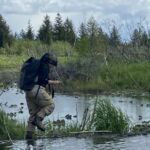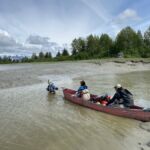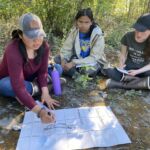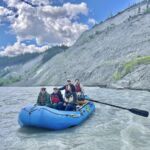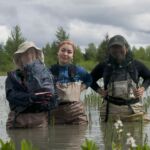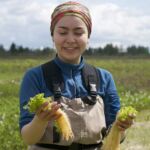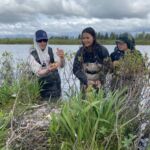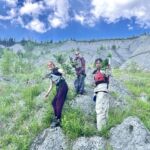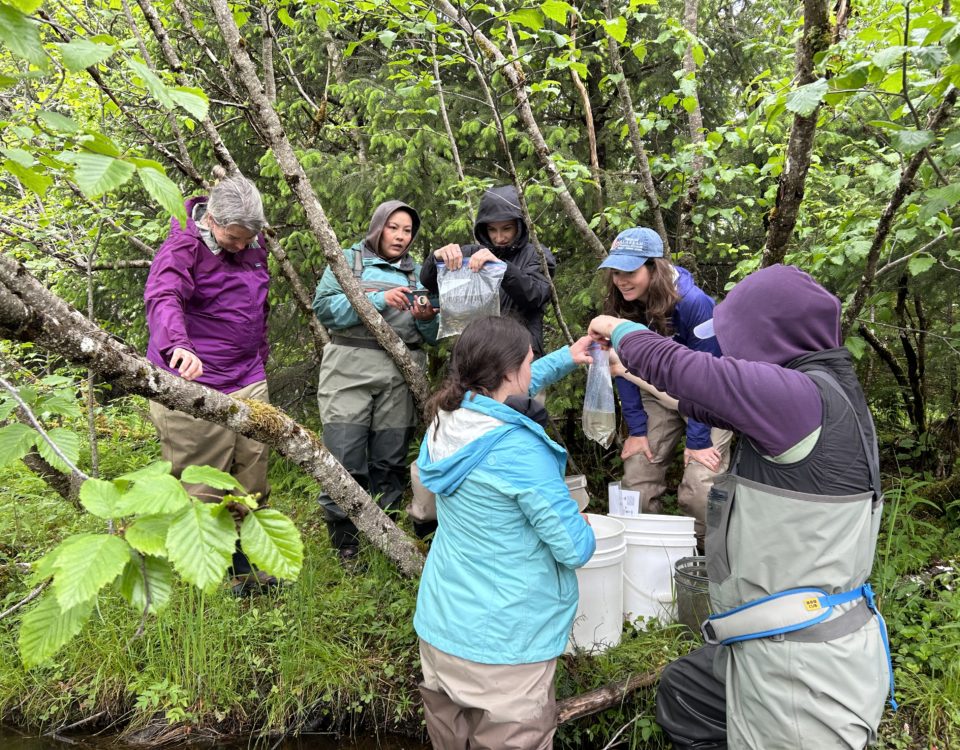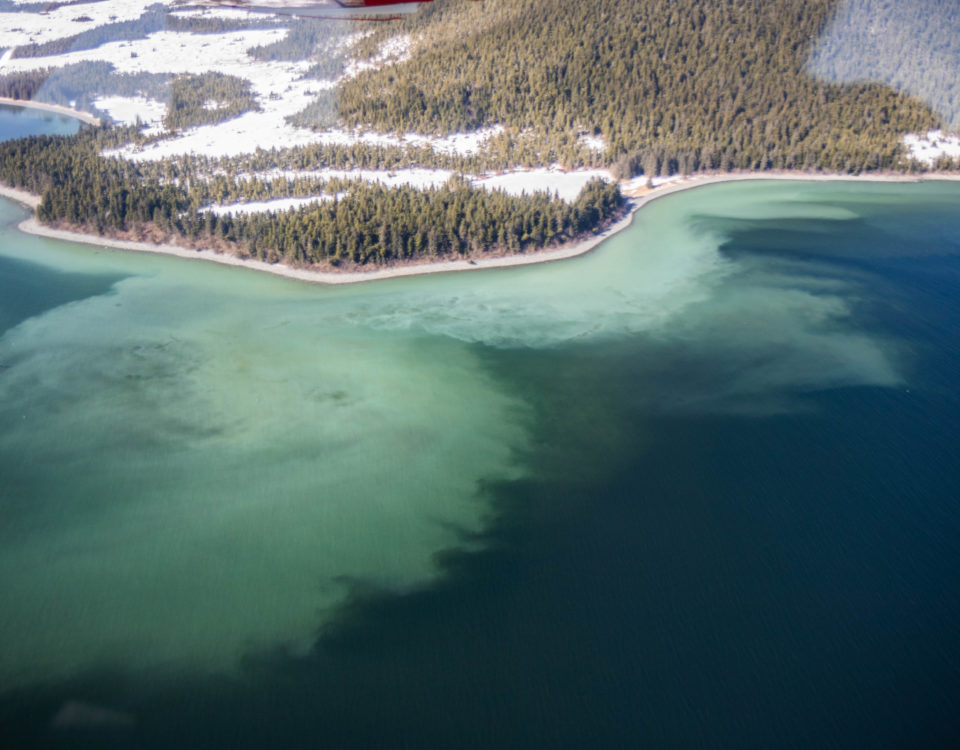Copper River Stewardship Program 2024
Just as a river gathers strength from its tributaries, we find strength in the connections we forge with others.
~Paulo Coelho
This year, the Copper River Stewardship Program’s theme was tributaries. Like the many tributaries flowing into the Copper River, nine teens from across the watershed converged on the Copper River this June. Students came from Chitina, Kenny Lake, Strelna, Slana, and Cordova. The purpose of the trip was to experience the watershed’s many tributaries, forge connections with teens from other regions, hear new perspectives, and see how individuals can contribute to a greater and healthier watershed.
The group started in Cordova at Power Creek, learning how Cordova utilizes tributaries to source electricity. Next, they canoed on the Alaganik Slough to the U.S. Forest Service Pete Dahl research camp to learn about wetlands and the research supporting artificial Dusky Canada Goose nest sites.
A ferry ride across the sound included a boat tour, meeting the captain, and learning about the effects of the 1989 Exxon Valdez oil spill from oral histories and other ferry passengers who remembered the event. The ferry sailed past Bligh Reef, where the stewards took a minute to contemplate the spill’s effects on their respective communities.
Upriver, in the Copper Basin, the stewards set to exploring more tributaries. A raft ride down the Klutina included a lunch break with a weed-pulling session. Stewards collected over 100 lbs of the invasive White Sweet Clover from the Klutina’s banks. They ended their adventure with a jet boat ride down the Copper River to see the different ways our communities participate in subsistence fishing.
Traveling from the delta to the basin gave the stewards a front-row seat to the diversity of the landscape. One steward commented, “The [Copper River] watershed contains a beautiful variety of landscapes and terrains,” while another noted, “ I learned the history of my ancestors’ lands.”
The trip, while educational and academic, also had an artistic and emotional component. Stewards engaged in journaling practices, both writing and illustrative. Taking a moment to sit in nature and contemplate their role in the ecosystem led to some eye-opening epiphanies, such as “ how big the watershed really is and also how beautiful the land is.”
When asked how the trip had changed them as people, one steward responded, “I realized how much more compatible I am with nature rather than electronics.”
To see more details from their trip, visit their story map.
If you know a teen interested in joining the 2025 Copper River Stewardship Program, visit our website and learn what it takes to apply to be a Copper River Steward.
This program was made possible through partnerships with Wrangell Institute For Science and Environment, Copper River Watershed Project, The Bureau of Land Management, The U.S. Forest Service, and the National Park Service. Support for the program comes from Prince William Sound Regional Citizen’s Advisory Council, Alyeksa Pipeline Services Co., and the Kate Svitek Memorial Foundation.


